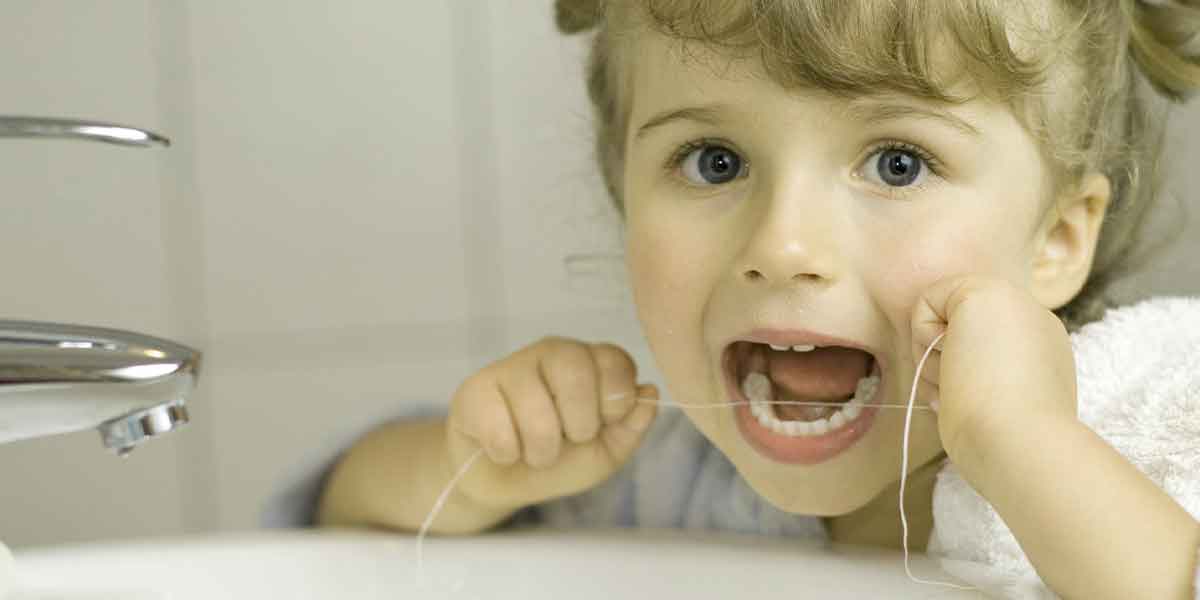Teaching kids the importance of flossing their teeth is crucial for their overall oral hygiene. Parents often have questions about when and how to introduce flossing to their child’s daily routine. In this article, we will address the top queries parents have about children’s teeth flossing, offering essential tips and guidance to ensure your child develops healthy flossing habits.
When is the Right Time to Start Flossing?
Flossing plays a significant role in oral hygiene by removing plaque and food particles from areas that a toothbrush cannot reach. Parents frequently wonder when their child should begin flossing.
Age to Initiate Flossing
Children should start flossing when they have two teeth that touch, typically around 2 to 3 years old. At this stage, parents should assist their child with flossing as young children may not have the necessary dexterity to floss effectively on their own.
Establishing a Routine
Incorporating flossing into your child’s daily oral care routine early on can help establish the habit. Flossing once a day is usually enough, and it can be done at any time, though many parents find it easiest to include it in the bedtime brushing routine.
How to Properly Floss a Child’s Teeth?
Proper flossing technique is essential for removing plaque and preventing gum disease. Here are steps to help you floss your child’s teeth correctly:
Selecting the Right Floss
There are various types of dental floss available, such as traditional string floss, floss picks, and flossers designed for children. Choose a type that is comfortable and easy to use on your child’s small teeth.
Flossing Steps
- Use about 18 inches of floss, wrapping most of it around your middle fingers.
- Hold the floss tightly between your thumbs and forefingers.
- Gently guide the floss between your child’s teeth using a gentle sawing motion.
- Curve the floss into a C shape around each tooth and slide it under the gumline.
- Move the floss up and down to clean the sides of each tooth.
- Use a clean section of floss as you move from tooth to tooth.
Tips for Effective Flossing
- Be gentle to avoid harming your child’s gums.
- Ensure to floss behind the back teeth.
- Encourage your child to be patient and thorough.
What to Do If Your Child Resists Flossing?
Children may resist flossing, especially when it’s a new addition to their routine. Here are strategies to make flossing a more enjoyable part of their daily oral care:
Making Flossing Fun
Turn flossing into a fun activity by using flavored floss or floss picks with engaging designs. You can also create a song or game related to flossing to keep your child motivated.
Leading by Example
Children are more likely to adopt good oral hygiene habits if they see their parents practicing them. Floss your teeth alongside your child to demonstrate that flossing is a normal part of dental care.
Offering Positive Reinforcement
Use positive reinforcement to motivate your child to floss regularly. Praise their efforts and consistency, and consider implementing a reward system, like a sticker chart, to track their progress.
Can Flossing Harm My Child’s Gums?
Parents may worry that flossing could damage their child’s gums, especially if they notice bleeding. Here’s what you need to know about flossing and gum health:
Proper Technique to Prevent Injury
When done correctly, flossing should not harm your child’s gums. It’s crucial to use a gentle touch and avoid snapping the floss between the teeth, which can cause injury. If bleeding persists, consult your dentist for advice.
Bleeding Gums
It’s normal for gums to bleed slightly when your child starts flossing, as the gums are adjusting to the stimulation. However, persistent bleeding may indicate gum disease or improper flossing technique, requiring dental consultation.
Are There Alternatives to Traditional Flossing?
If traditional flossing is challenging for your child, there are alternative methods to clean between the teeth effectively:
Floss Picks and Flossers
These are convenient alternatives to traditional floss, making the flossing process easier for young children.
Water Flossers
Water flossers use a stream of water to remove plaque and food particles, suitable for children who struggle with traditional flossing.
Interdental Brushes
These small brushes are designed to clean between the teeth and can be a useful alternative for children with larger gaps between their teeth.
In Conclusion
Flossing is a crucial aspect of maintaining good oral hygiene for children. By starting early, using proper techniques, and making flossing a positive experience, you can help your child develop healthy flossing habits. If you have concerns about your child’s oral health, consult your dentist for personalized advice. With the right approach, flossing can become a regular and stress-free part of your child’s daily routine.




